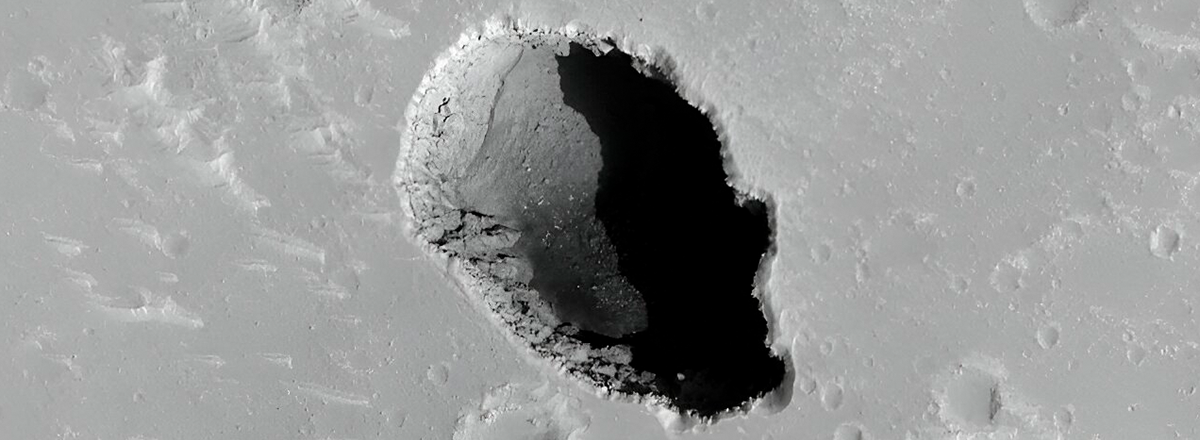Mars Lava Chamber Revealed as Potential Shelter for Future Bases
These subterranean structures offer protection from radiation, extreme temperature fluctuations, and even meteorite impacts. Researchers believe that such underground features could serve as crucial refuges for future Mars missions.

The Mars Reconnaissance Orbiter (MRO) from NASA has captured an image of a vast collapse feature on the surface of Mars, marking the remnants of a lava tube, Phys.org reports. Situated in the Utopia Planitia region, this geological formation could hold the key to future human bases on the Red Planet.
Lava tubes and chambers have long been of interest for potential use as shelter on Mars and the Moon. These subterranean structures offer protection from radiation, extreme temperature fluctuations, and even meteorite impacts. Researchers believe that such underground features could serve as crucial refuges for future Mars missions.
This particular collapse feature in the Hephaestus Fossae Region is part of a network of channels and troughs and is linked to the nearby Elysium volcanic center. The origin of this unique geological formation is still under investigation, with theories suggesting that meltwater from an ancient impact may have played a role.
Lava tubes represent a solution to the formidable challenges of human exploration on Mars. The planet's surface is exposed to radiation levels 40 to 50 times higher than those on Earth, but the thick layer of rock above these lava tubes could provide the necessary shielding. Moreover, Mars experiences extreme temperature fluctuations, ranging from 20°C to -152°C, making temperature-controlled habitats within lava tubes an ideal choice for protecting astronauts and equipment.
While Mars exploration primarily revolves around the search for signs of past life, lava tubes could become integral to future missions, serving as safe havens for astronauts.

